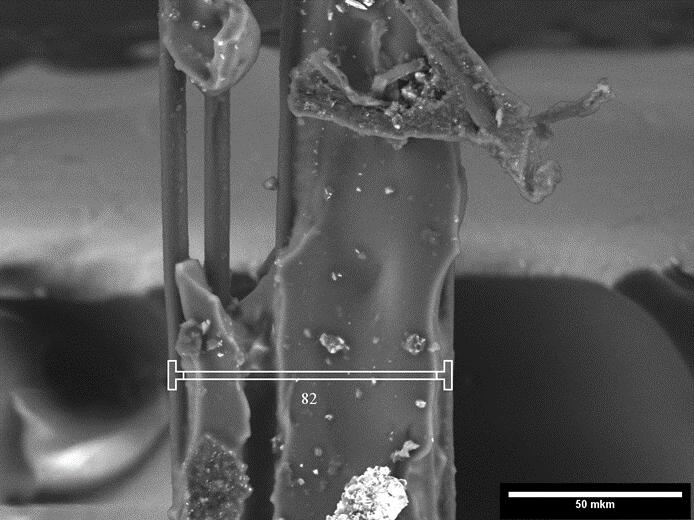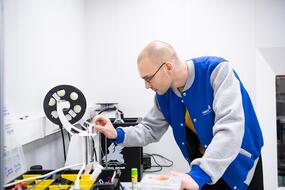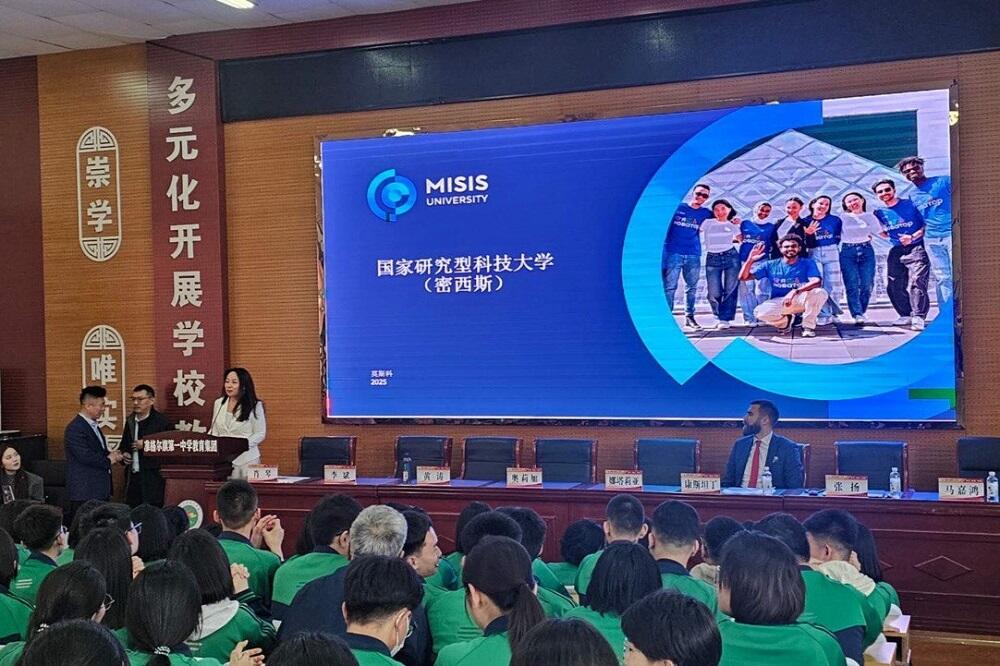Scientists at the MISIS University have patented a composite biocompatible microelectrode that can be used for electrical stimulation of nerve tissue. It is applicable in locating epilepsy foci in the brain and stimulating peripheral nerves to alleviate phantom pain. It will also be useful in studying spinal cord tissue regeneration.
Traditional metallic microelectrodes, due to their hardness and rigidity, can shift significantly from the implantation site and lack sufficient elasticity and flexibility. This leads to rejection and chronic inflammation. Consequently, the electrode itself may become damaged and crack. The newly developed electrode is much closer in mechanical properties to nerve and muscle tissues, which may reduce the body’s reaction to its implantation. The composite material consists of polydimethylsiloxane with conductive nano- and microparticles of carbon in various modifications (graphite, graphene, amorphous carbon). The electrode is used for localized delivery of electrical current to tissues.
“To establish the biocompatibility of the microelectrode, we conducted cytotoxicity testing. The material is harmless to human cells. During operation, the polymer conductive coating will take on part of the electrical impulse transmission, which will prevent the electrode from failing. Its characteristics may degrade, but the electrode will remain functional due to its flexibility: the overall elastic modulus is lower than that of a metallic electrode. As a result, when introduced into the body, the surrounding tissues will not be significantly irritated,” explained Sergey Zhirnov, an engineer of the scientific project at the Scientific and Educational Laboratory of Tissue Engineering and Regenerative Medicine at NUST MISIS.
Additionally, the development by the scientists at NUST MISIS has undergone dynamic stretching tests at a constant temperature of 37˚C. The obtained value remains constant and falls within a range characteristic of nerve tissue.
In the future, this electrode may be used as a functional component in domestic neurorehabilitation systems, cybernetic suits, and complex exoskeletons for neurorehabilitation. This development will also be beneficial for researchers and medical professionals who utilize electrical stimulation of living tissues in their work.




